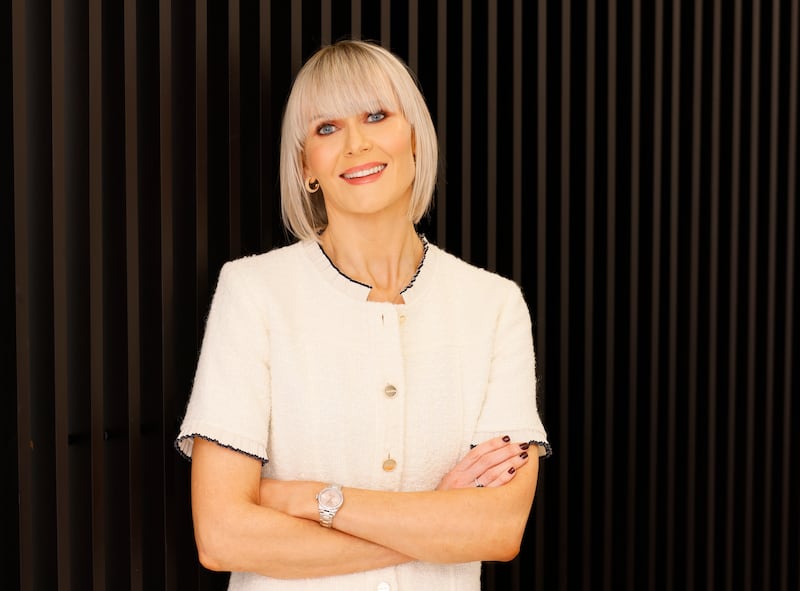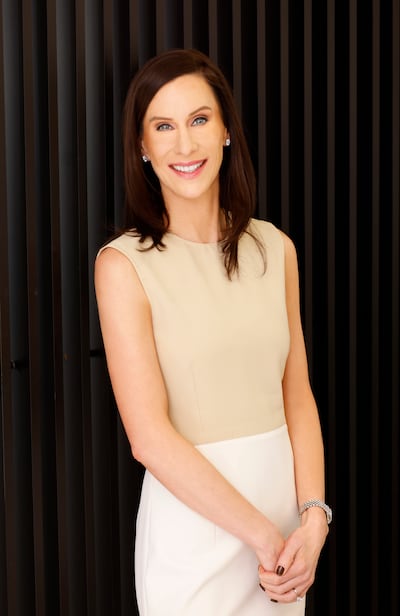Consultant dermatologist Nicola Ralph estimates that she spends at least 50 per cent of her working day “diagnosing skin cancers and then taking them off”.
In an era when many experts worry that frequent social media use is leading to unrealistic body image ideals, she and her colleague Prof Caitriona Ryan, have reason to be worried about what their patients are absorbing online.
With skin cancer, the most common cancer in Ireland with more than 13,000 cases a year, they are very exercised about widely viewed TikTok videos, promoting a beauty trend known as “sunscreen contouring”.
“It is highly concerning,” said Prof Ralph of the advice to only apply sunscreen to certain parts of the face, leaving other parts unprotected in order to achieve that sought after “sun-kissed” glow.
“But really it is causing intentional sunburn and sun damage which is just going to lead to skin cancer,“ said the clinical assistant professor at University College Dublin.
Online platforms are providing a dizzying amount of information about everything from the ability of snail secretions to hydrate the skin, to the reasons some people are injecting DNA derived from salmon sperm beneath their eyes.
The two medics, who founded the Institute of Dermatologists and are also based at the Blackrock Clinic, find some of the trends more worrying than others.
Prof Ralph became aware of sunscreen contouring during the 2020 lockdowns – a time when unhappiness at how people looked on Zoom prompted some to investigate a range of cosmetic interventions, including dermal fillers and Botox, a development known in the beauty industry as “the zoom boom”.
[ Lip service: The rise and rise of cosmetic procedures in IrelandOpens in new window ]
“The biggest source of skincare and beauty education now is TikTok especially in our younger generation,” said Prof Ryan. “But I have women in their 60s and 70s watching TikTok and coming in talking about all of these new fads. So it is something we cannot ignore as dermatologists. There are lots of strange things that they are doing.”

None stranger than “freckling” whereby, according to Prof Ralph, a sharp instrument, usually a home sewing needle, “sterilised or unsterilised”, is used to apply a semi-permanent pigment tattoo across the cheeks and nose to mimic the effect of freckles.
“It has resulted in scars and infection. People usually buy the dye on eBay so they have no idea what exactly it is or where it has come from,” she said.
Although she has not come across any patient in her clinic who has tried this, TikTok features a number of freckling videos that have generated some bemusement from young people whose natural freckles caused them severe angst in the past.
“The same people who bullied me for having freckles are now getting them tattooed for an aesthetic,” wrote one.
Another online fad, which Prof Ryan despairs of, are DIY chemical peels where viewers are shown how to “make up their own concoctions, and peel their skin, using high concentration of acid and other things”. The capacity for this to go horribly wrong cannot be overstated, she said, with a real risk that these home-administered peels could cause burns and scarring.
Other influencers’ videos promote the use of ice on the face to banish puffiness and reduce inflammation. “But you can cause an ice cube burn because ice can numb the skin and then they don’t feel the pain of the burn,” said Prof Ryan. “We tell people not to use direct ice, to wrap it in a cloth.”
[ Extreme male grooming: Why are young men embracing damaging beauty ideals?Opens in new window ]
Selene Daly, a Sligo-based advanced nurse practitioner and life coach, describes TikTok and other online platforms as “the wild west” and said the voices there “are louder than any nurse’s voice, or any parent’s voice”.
Having spent most of her career focused on dermatology, she too is horrified at the impact online platforms and influencers are having especially on young people when it comes to beauty treatments and cosmetic procedures.
Last Christmas she knows of parents who bought a very expensive brand of “non-age appropriate” creams for their children which had been heavily promoted online and which contain retinol. “Retinol gets rid of dead skin cells. I use it because I am 45. The irony is these young people are being sold an anti-ageing product, when they are under the age of 18 which is absolutely ridiculous, especially as they need that layer of skin for sun protection.
“But the other aspect of this is about self-esteem and the emotional intelligence of young people when it comes to how they look. Their body image is completely skewed and nobody is doing anything to protect these young girls.”
It is six years since Prof Ryan wrote a letter to the then minister for health Simon Harris appealing to him to take urgent action to prevent non-medically trained individuals from injecting dermal fillers, into the faces of their clients, a practice that is still widespread in beauty salons around the country.
Dermal fillers that contain injectable hyaluronic acid, are used to plump up the face, targeting cheekbones, jawline and lips as well as “fine lines”.
“This practice is alarming, as inadvertent injection of a dermal filler into an artery of the face can result in blindness or necrosis of tissue of the face,” Prof Ryan and colleague Rosemary Coleman, warned the Minister. They pointed out that when things go wrong the only remedy is an immediate jab of hyaluronidase, a regulated prescription injection (which can cause anaphylaxis in those allergic to bee stings), and which can only be injected by physicians or registered nurses and midwives in accordance with the directions of a registered medical practitioner or dentist.*

Although only doctors and dentists can administer Botox which is classed as a “medicine”, fillers are considered a device and, according to Prof Ryan, not just in Ireland but across the EU it is still legal for anyone to administer them.
“You could go on eBay, order fillers and inject them into your friends’ faces and you will be doing nothing illegal,” she said. “I worry for the more impressionable girls and young women who I regard as most vulnerable. Maybe they cannot afford to go to the more reputable clinics so they go to beauty salons or maybe even get someone to come to their homes. They are injecting fillers in people’s bedrooms and kitchens.”
Prof Ryan, an associate clinical professor at University College Dublin, believes “filler face” became endemic in Ireland in recent years.

“I have seen a dramatic increase in this overfilled appearance, particularly in women in their 40s to 60s over the past four to five years in Ireland. This often distorts natural beauty, and in my opinion, ages a lot of women.”
But in the past year or so she said that “thankfully the pendulum has begun to swing back” as people opt for a more natural look and are choosing tightening procedures that stimulate their own collagen, rather than fillers.
Meanwhile, Daly believes that both young men and women are being targeted by the so-called influencers. “With boys it is all about their muscle mass, looking a certain way, teeth whitening and so,” she said.
Figures released by the Health Products Regulatory Authority (HPRA) recently confirmed that almost 30 per cent of the illegal medicines it seized in 2023 were anabolic steroids, with over a quarter of a million units detained.
[ ‘My 14-year-old daughter wants lip fillers’Opens in new window ]
Grainne Power, director of compliance with the HPRA, said there appeared to be a willingness among some consumers to take risks in sourcing falsified medicines and unauthorised substances “for aesthetic and body image purposes” and she noted the 20 per cent rise in seizures of illegal anabolic steroids. “We believe young men in particular may be sourcing anabolic steroids for body enhancement while being unaware of the serious health complications posed by these products”, citing potential side effects including heart failure, liver issues, kidney damage and infertility.
In a statement on the regulation of dermal fillers, the HPRA said it had no role in regulating the administration or the users of the fillers. It pointed out that under regulations introduced last June governing medical devices, dermal fillers had to be labelled as not to be used by under-18s and to be administered by “appropriately trained healthcare professionals”.
The HPRA said it was continuing to engage with the Department of Health on regulation and had submitted a policy document to the department.
A department spokesman said it was currently considering the regulation of dermal fillers in Ireland and “has discussed the matter with stakeholders, including the HPRA”.
According to TikTok it does not allow content showing or promoting dangerous activities and challenges, and it does not allow misinformation, “including medical misinformation”, that can be harmful to health.
*This article was amended on Saturday, May 18th, 2024. An earlier version said hyaluronidase could only be administered by physicians.
- Join us for The Irish Times Inside Politics podcast live in Belfast on April 10th
- Sign up for push alerts and have the best news, analysis and comment delivered directly to your phone
- Find The Irish Times on WhatsApp and stay up to date










